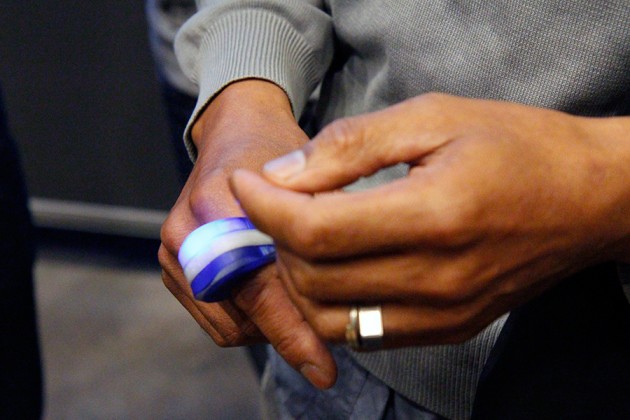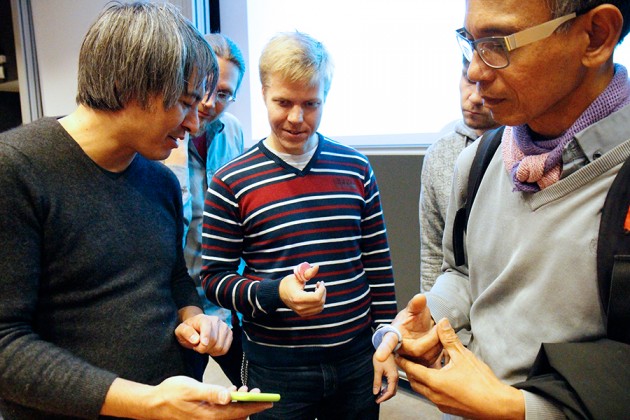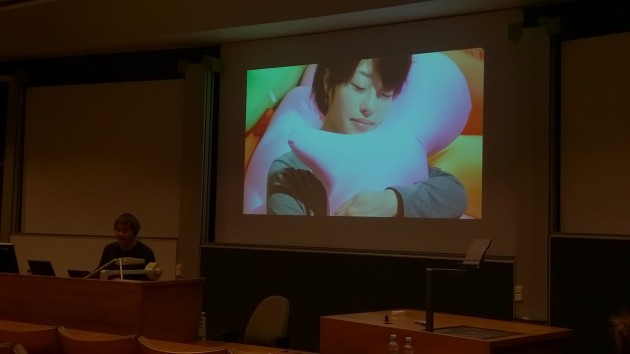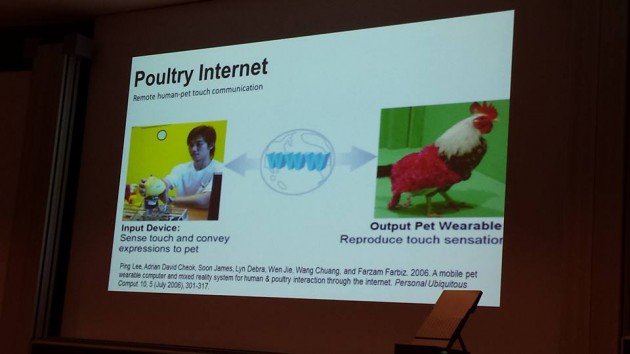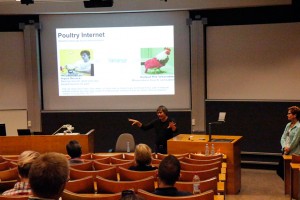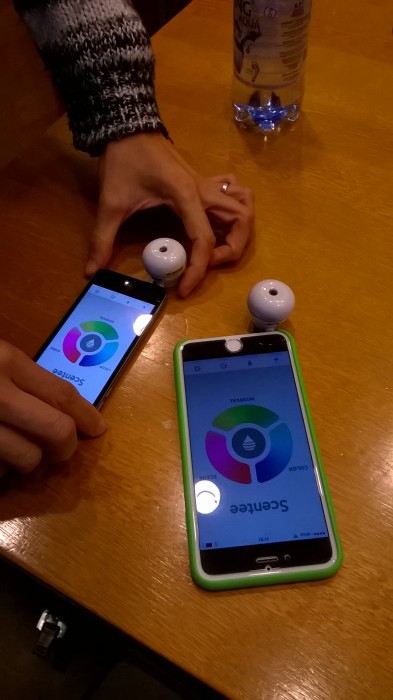Adrian Cheok Talk: “Everysense Everywhere Human Communication”
Time: Friday 25.9.2015 at 10.15-12
Place: TUT, Tietotalo, TB109 (Korkeakoulunkatu 1, 33710 Tampere)
Adrian Cheok was visiting Tampere and gave an inspiring talk on the title “Everysense Everywhere Human Communication”. Cheok was also one of the main speakers in MindTrek 2015. The talk at TUT was organized by UBINET doctoral network. Adrian Cheok is the Director of the recently established Imagineering Institute, Malaysia, and Professor of Pervasive Computing, in City University London. He has been working on research covering mixed reality, human-computer interfaces, wearable computers and ubiquitous computing, fuzzy systems, embedded systems, power electronics.
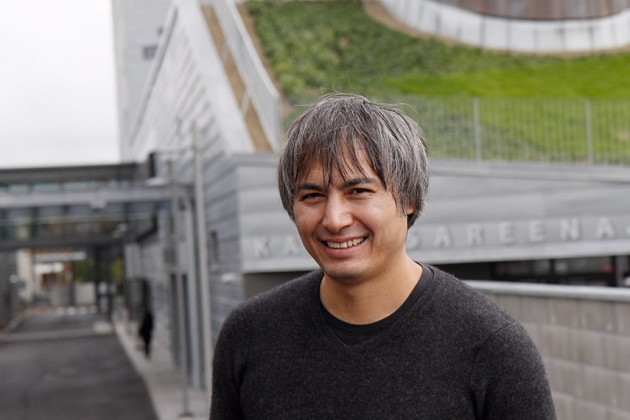
Problem in current interaction with computers is that all the interaction happens behind the glass or window. In human interaction nonverbal communication is extremely powerful – 60 % of all information transformed face-to-face is nonverbal.
Traditionally interacting with devices has included visual, audial and tactile feedback. Adrian Cheok’s group designs for multimodal and multisensory interaction – bringing all the senses to the interaction. Vision of Adrian Cheok’s group is to augment reality with artificially created stimuli. Visual, sound, touch, smell and taste. Smell and taste connect to the limbic system, which links to memories and feelings, and thus have great possibilities in emotional design.
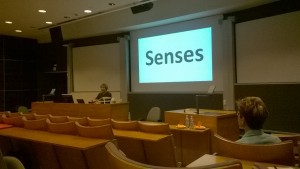
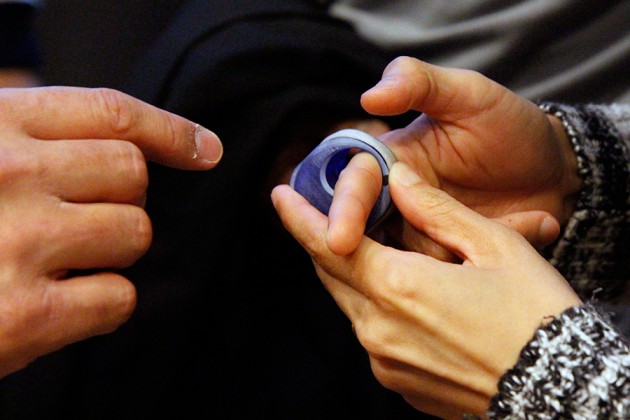
Humans can develop new types of communication environments using all the senses, including touch, taste, and smell, which can increase support for multi-person multi-modal interaction and remote presence. Cheok suggested alternative ubiquitous computing environments based on an integrated design of real and virtual worlds. Cheok used Sensorama, the first system enabling also olfactory feedback, as an example of how traditional the idea of multisensory interaction is.

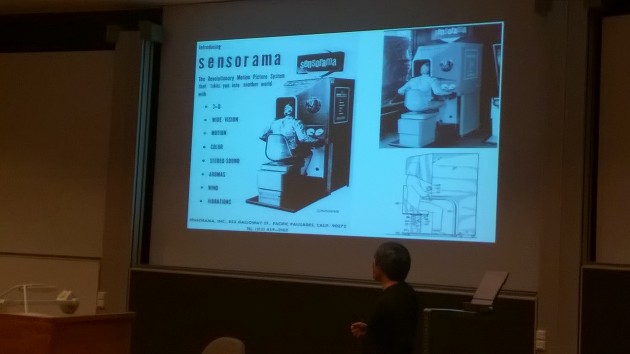

Cheok claims that also possibilities of tactile feedback are underused. In communications between humans, touch is essentially important. Emotional messaging, by hugging and transferring a feel of hug through haptic feedback was one of the ideas their group has tested. Also, using haptic feedback in kiss messaging – application and device called Kissenger.
Cheok aims for new kind of tele-presence with all the senses included. One of the possibilities of touch-based communication in the future is that where the touch traditionally is one-to-one, in digitalized form it can be one-to-many.
RingU concept enables users to remotely send touch, caresses and hugs through the haptic feedback in a form of ring.
But not only in human-to-human interaction, also when interacting with animals touch is important. Cheok introduced system to mediate feeling of touch to animals.
Digitizing the senses

Cheok claimed that our brain is living in a virtual reality even now – all the perceptions are interpretations of physical things by brain. We see the world through the filter of our senses and the brain interpretations can be tricked or digitized.
Scentee: 60 gram device that can be attached to your mobile phone and can generate different smells.
Smell can effect and relieve muscular pain, e.g. neck and back pain. Smells released in the office space could make people feel better. Olfactory sensations require chemical stimuli, but taste neurons can be activated with electric signals. Adriand Cheok introduced device that can produce sour taste through electric signals.
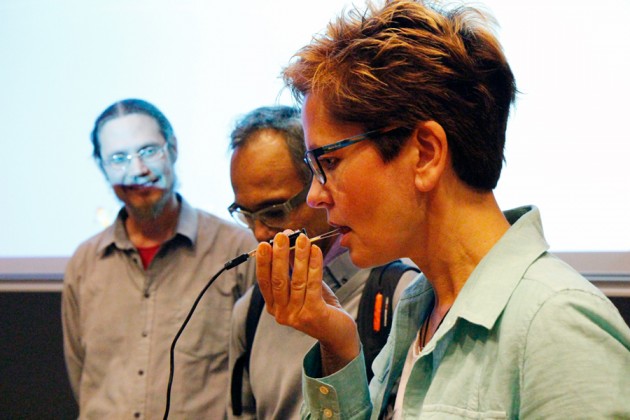
In the end of the lecture, Cheok discussed possibilities of food messaging, food printing and communication. E.g. edible messages, even 3D food printing in the future can be possible. Children would be able to program food dishes without the heat, fire and knives and all the dangerous or hard-to-use things. Cheok claimed, that as in every new media, there will be downsides, but in the end the aim is to increase human happiness.

